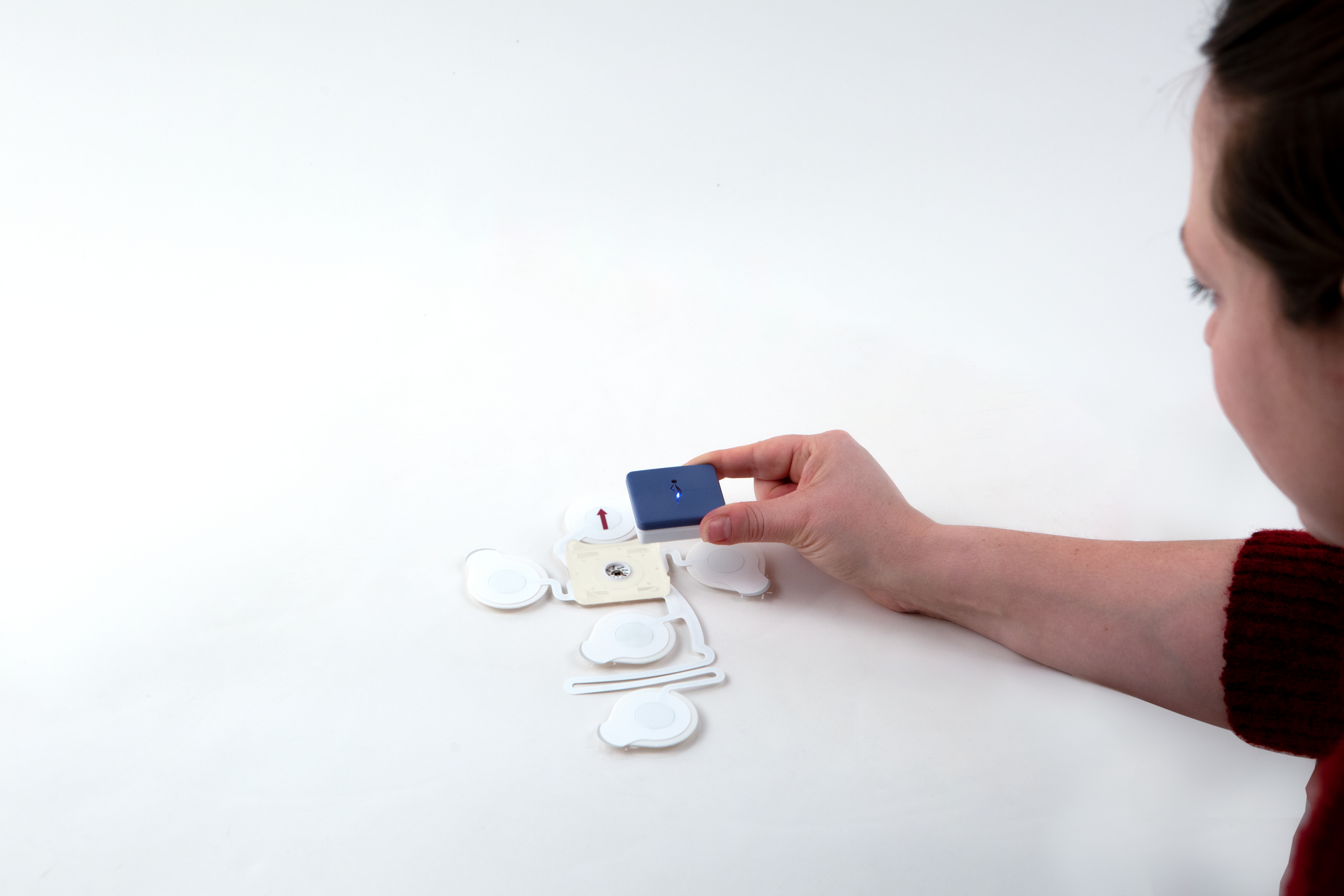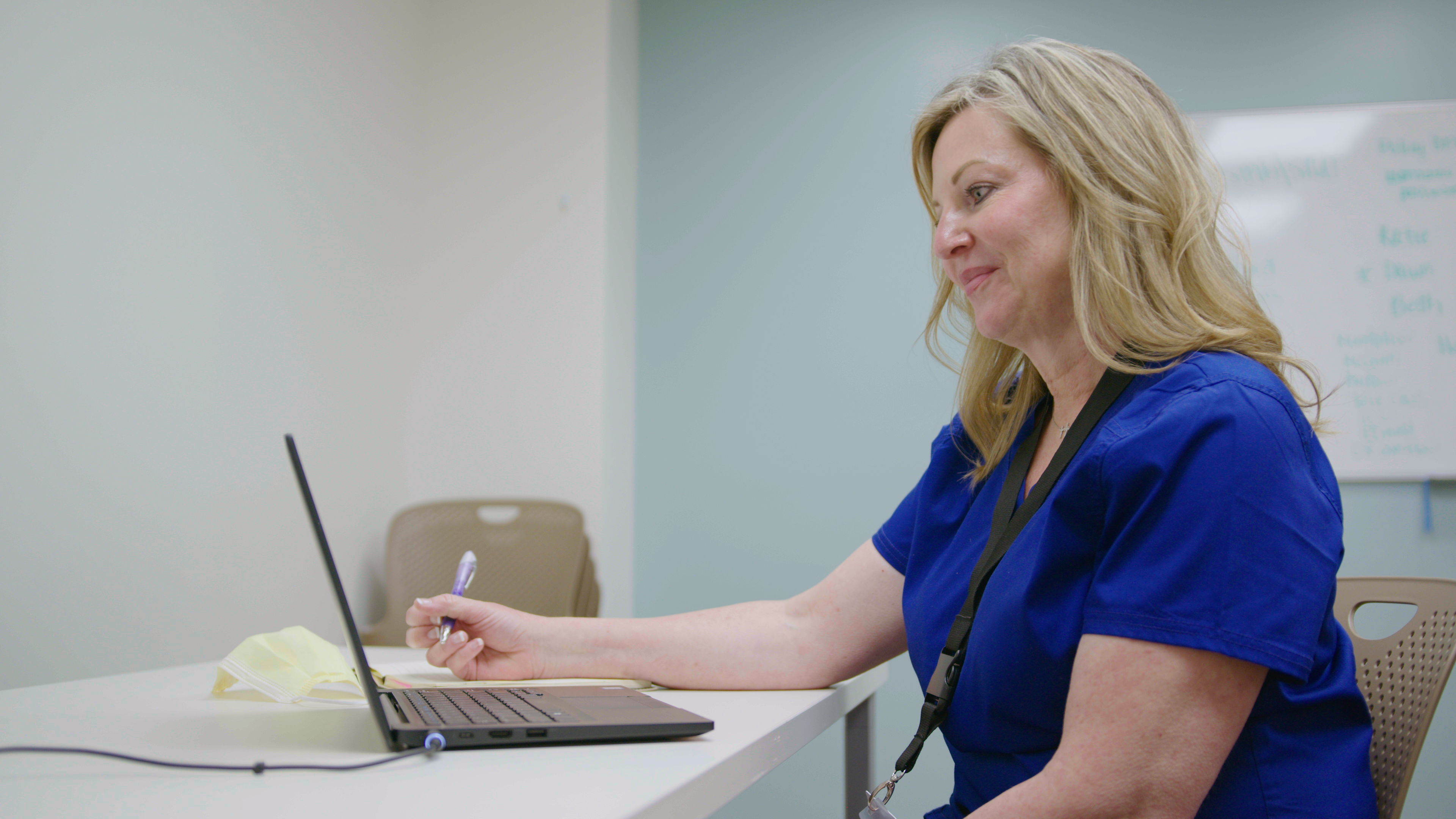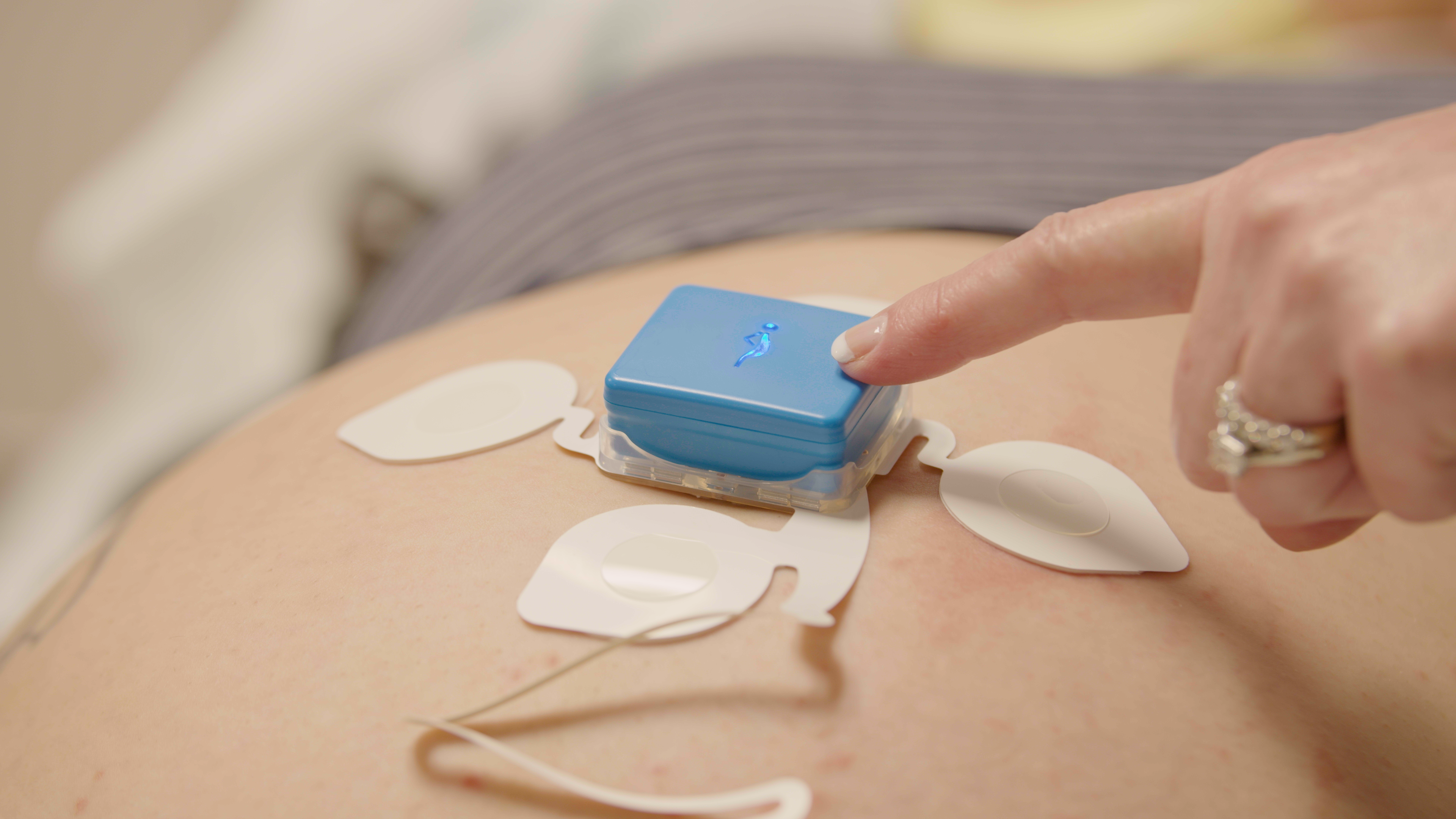Sarah Montalvan, a labor and delivery nurse, has spent a lot of time in birthing rooms, and she knows all the things that can go wrong.
Every time the uterus contracts during labor, there’s a decrease in the baby’s oxygen supply that can, in extreme scenarios, lead to complications or even death or permanent brain damage. Continuous fetal monitoring during labor is crucial to supporting the health of the mom and baby.
As featured in BBC StoryWorks’ “Caring with Courage” series, Montalvan discusses the birth of her third child and her experience using GE HealthCare’s Novii™ — a belt-free, wireless, battery-powered fetal monitor that attached to her abdomen with sticky pads and allowed her to move freely around the birthing room. The monitoring solution noninvasively measured and displayed both Montalvan’s and her baby’s heart rates as well as the mother’s uterine activity.
Sarah Montalvan and her child
“I had the freeing feeling, the empowering feeling,” she says. “I could get into the tub and still have my baby’s heart checked with the wireless monitor. I was able to bounce on the ball and not have to fight with any monitors.” Montalvan was able to maneuver herself into positions that made it easier for her to deal with the pain from the contractions and to open her pelvis wider so her baby would have an easier time descending through the birth canal. Of her three labors, she says, this was by far the easiest, and she credits the wireless monitoring solution.
Advantage for maternal nursing staff
Wireless fetal monitoring benefits nurses, too, says Lisa Stout, a registered nurse and clinical sales specialist for GE HealthCare. Instead of having to remain in the birthing room to keep the fetal monitors in place, the nurses are free to tend to their other patients and administrative tasks.
This is especially helpful now that many labor and delivery wards are understaffed and nurses are stretched thinner than ever. The nursing shortage has gotten worse since the pandemic. New technology can help nurses work more efficiently and can alert them to changes in patient status.
Stout says she is glad to have the opportunity to share her clinical experience with engineers to make sure the technology enables the monitoring necessary in the birthing room. Stout, who has been a registered nurse since 1989, has never felt comfortable delivering a baby without any kind of monitoring. She believes it’s especially necessary in cases where the mother has a medical condition, such as gestational diabetes or preeclampsia, or if labor is being induced.
Until now, Stout says, labor and delivery nurses have had two choices for monitors. With external monitoring, two transducers are strapped around the mother’s abdomen, one over the top of her uterus and a lower one that uses ultrasound and is directed toward the baby’s heart. This is the kind Montalvan had when she gave birth to her first two children. A button on the first transducer picks up on changing pressure from the uterus, while the ultrasound transducer detects the movement and sound of the baby’s heart beating. The belts and cables hinder mobility for mothers, and the external transducers can have trouble picking up signals during the birth process, especially on patients with a higher body mass index.
Lisa Stout
There are alternatives to external monitoring, but they pose challenges that may introduce additional risk. Internal monitoring requires that the water has broken, and the cervix must be dilated enough to enable placement within the uterus. This poses risk of infection or trauma. And some patients may request that internal monitors not be used.
A more widely available and liberating option
Earlier this year, Novii+ received 510(k) clearance from the FDA for use in both antepartum and intrapartum pregnant patients at 34 weeks and beyond. Novii+ is an expanded indication from the Novii Maternal and Fetal Monitoring Solution that was first introduced in 2015. This expanded indication of the monitoring solution can be used three weeks earlier than the previous iteration, which was for use at 37 weeks and beyond, and the solution can now monitor approximately 95% of all eligible births in the United States. The newest iteration also utilizes updated fetal heart rate algorithms, incorporating Cross Check artifact reduction for improved trace interpretability and enhanced reliability and accuracy.
According to the Centers of Disease Control and Prevention, one in ten newborns in the United States are born prematurely, a statistic that has not changed significantly in the past 60 years, while maternal morbidity and mortality have both increased. With the expanded indication for Novii+, care teams can now use the fetal and maternal monitoring solution for a larger number of patients facing high-risk pregnancies.
Novii+ bridges the gap between external and internal monitoring, says Stout. Instead of strapped-on transducers or invasive internal monitors, a special Novii+ Wireless Patch containing five adhesive electrodes is attached to the mother’s abdomen and centered over the uterus. It’s lightweight and there are no belts or cables. The five electrodes, working in tandem to form channels, pick up electrical signals from the uterine muscle activity and from the mother’s and baby’s hearts.
The whole thing is powered by a waterproof Novii+ Pod, magnetically clipped to the center of the Patch, that contains software that processes the electrocardiogram and electromyography signals in real time and transmits them via Bluetooth to the bedside fetal monitor. Most fetal monitors are networked to a central monitoring screen at the nurse’s station so they can monitor the patient while they’re out of the room. The Novii+ Pod is powered by a rechargeable battery that can last up to 11 hours.
Stout says the Novii+ is a good option for moms who want to be able to move around the delivery room or get in the shower while still being monitored. “Research has shown that with moms that are active and moving during labor, their labors are shorter in duration,” she says. “They’re less likely to have a C-section and less likely to have complications. There are psychological benefits, too. A mom who can move around feels like she has more control over what’s going on.”
Montalvan has had the benefit of directly comparing birthing experiences, as both a nurse and a patient.
Click here for more information about Novii+.
As with other adhesive patch sensors, a small percentage of users have reported skin irritation from this new technology, and this new method for fetal heart rate (FHR) may not work for all situations.





